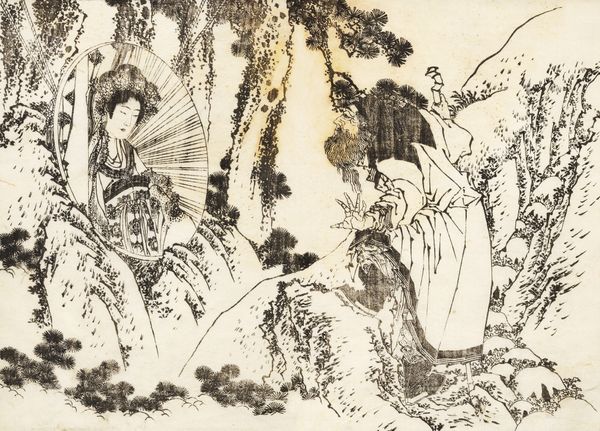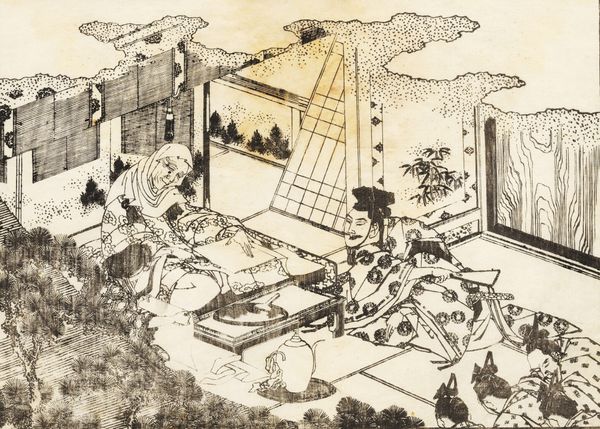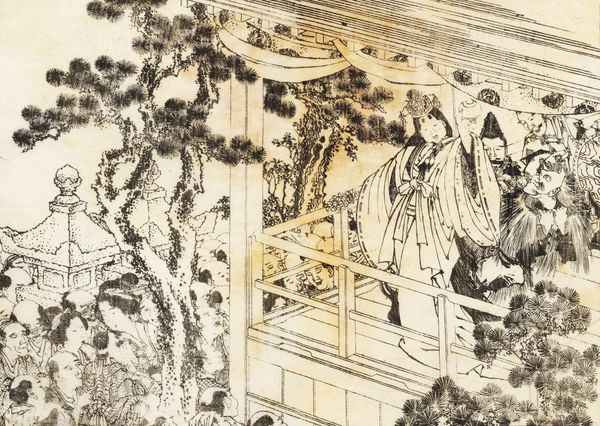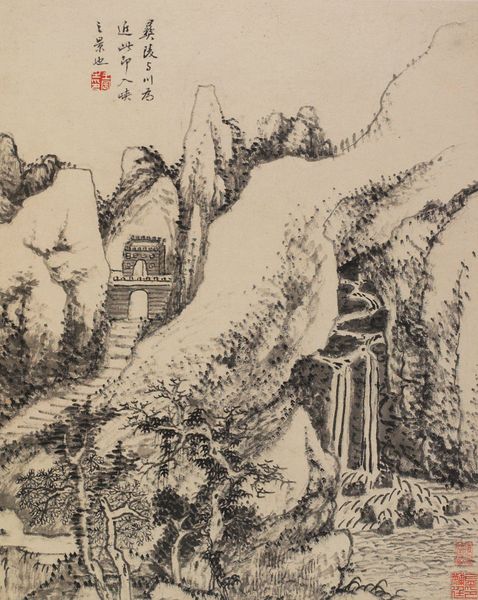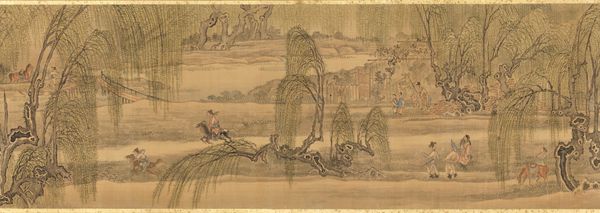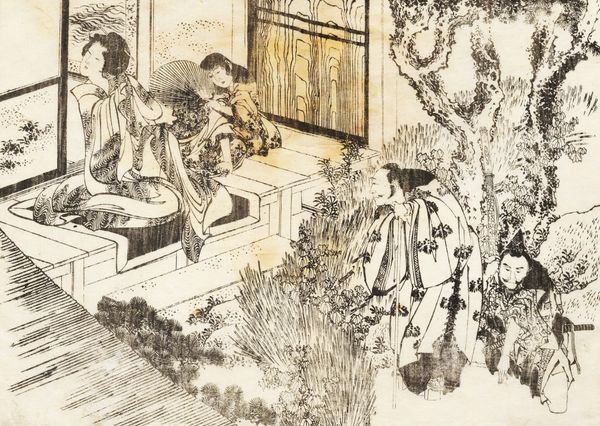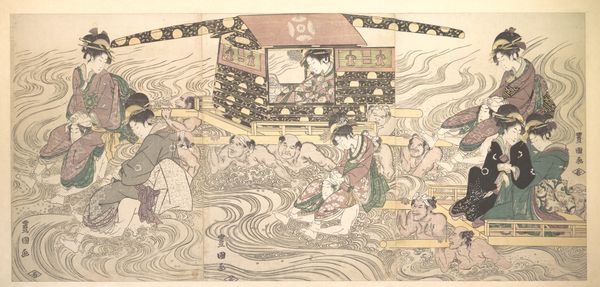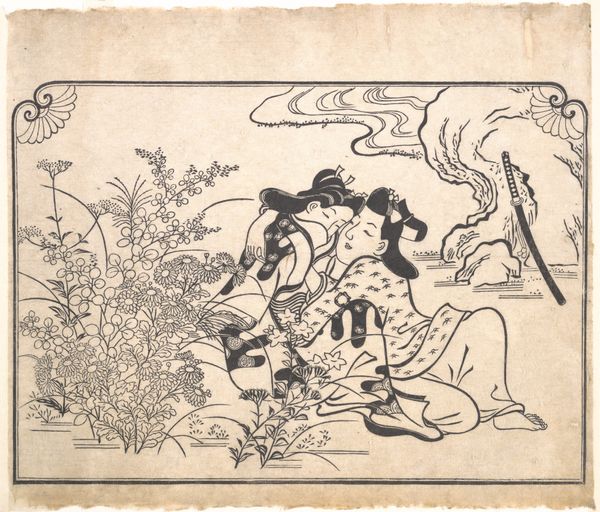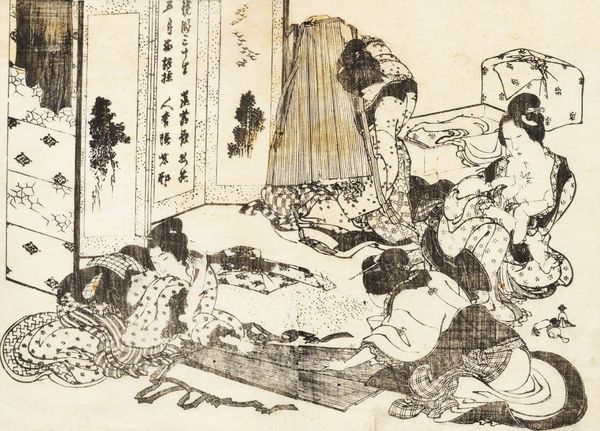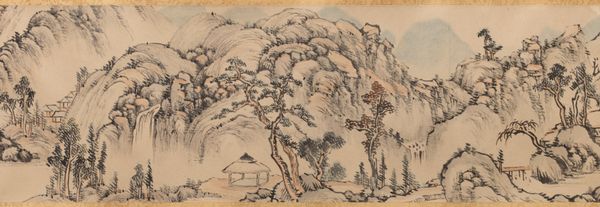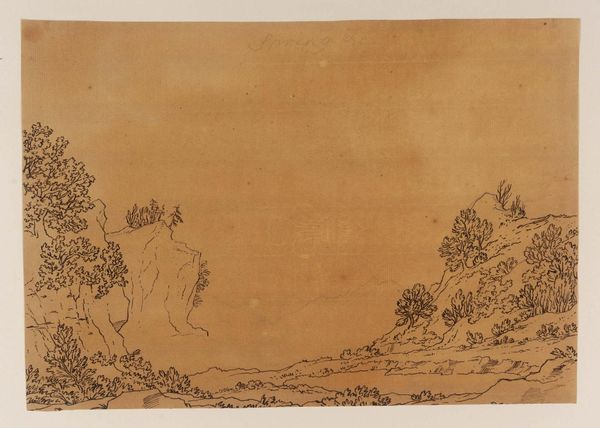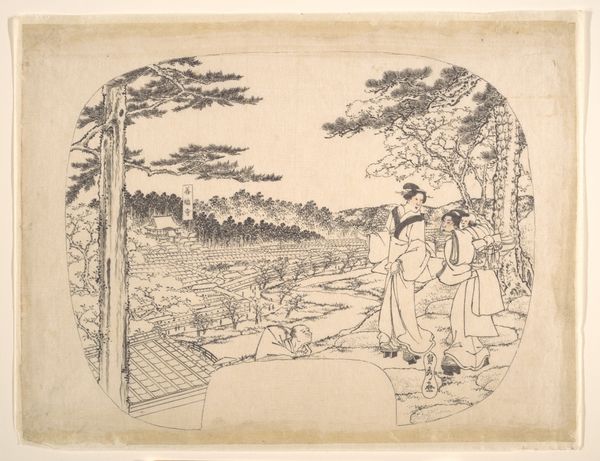
drawing, print, ink, woodcut
#
drawing
#
narrative-art
#
pen drawing
# print
#
asian-art
#
landscape
#
ukiyo-e
#
ink
#
woodcut
#
genre-painting
Copyright: Public domain
Editor: So, here we have "Four women working very hard and carrying vats of water" by Katsushika Hokusai, a print made with ink and woodcut. The line work seems delicate and precise, but the image as a whole feels incredibly busy and dynamic. What jumps out at you when you look at this, from a formal perspective? Curator: It is quite striking how Hokusai uses line to define form and create a sense of depth. Notice the varying thicknesses and densities of the lines. How do these linear variations affect your perception of the image's surface? Editor: I think it almost flattens the space, even with the attempt at perspective. The background details are as sharp as the figures in the foreground. Is that intentional? Curator: Precisely. Observe how the linear structure distributes detail uniformly across the image plane. There’s a conscious decision here to subvert traditional perspective, prioritizing a flattened visual field. The dynamic repetition of forms generates an almost textile-like surface. Note also the interplay between the solid forms and the negative space. Editor: I see what you mean! It's like a deliberate rejection of atmospheric perspective. Are there ways that this distribution of detail supports the reading of labor within the piece? Curator: It is difficult to ignore. The rendering of labor is not merely illustrative but formally integrated into the image's structure. The relentless repetition of tasks is mirrored in the compositional strategy itself, would you agree? Editor: I absolutely would. The way Hokusai uses these linear textures and rhythmic arrangements gives the work a depth beyond just the subject matter. Thanks, I've really learned so much. Curator: A formalist lens can indeed offer profound insights, it seems.
Comments
No comments
Be the first to comment and join the conversation on the ultimate creative platform.
